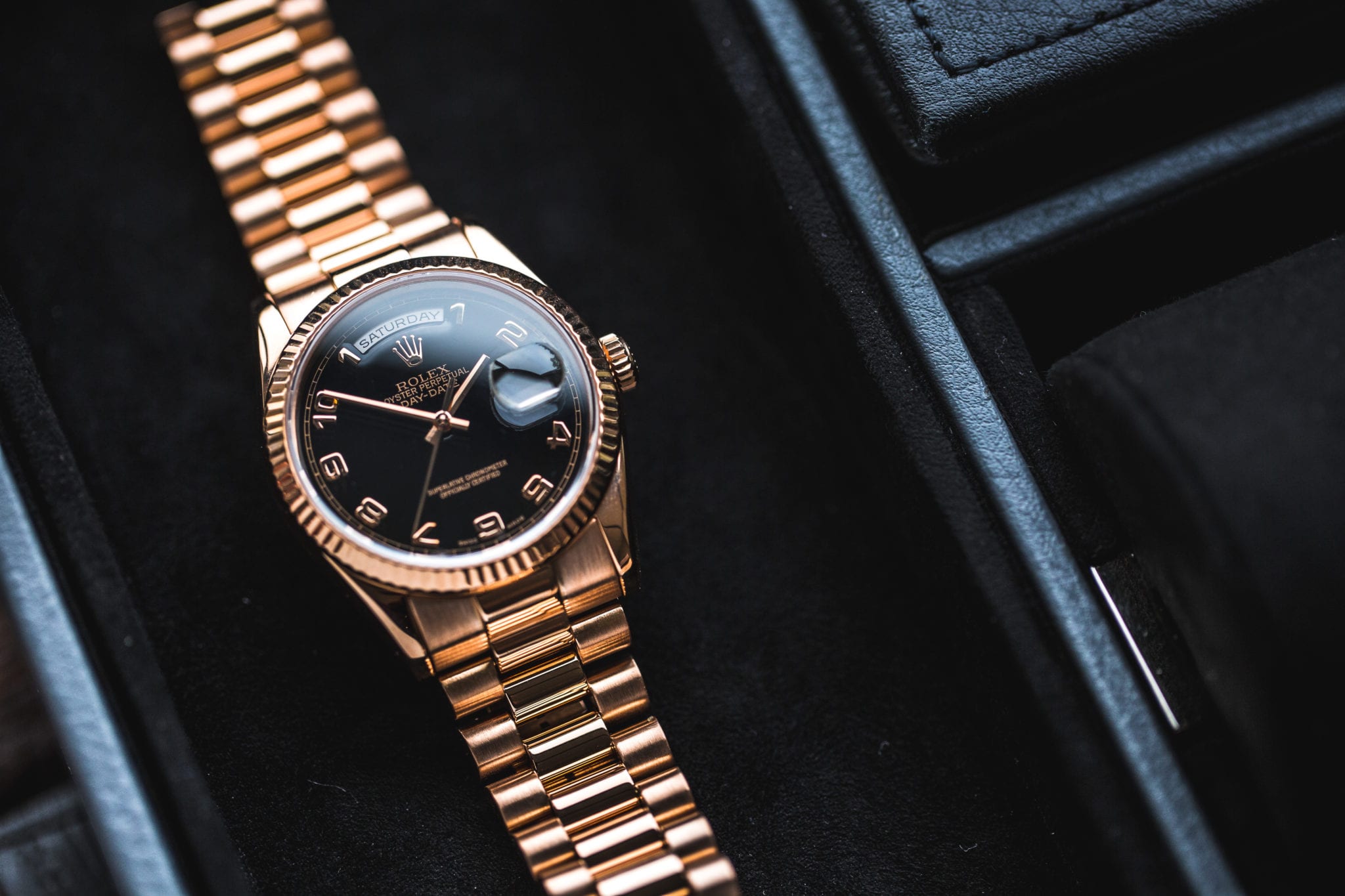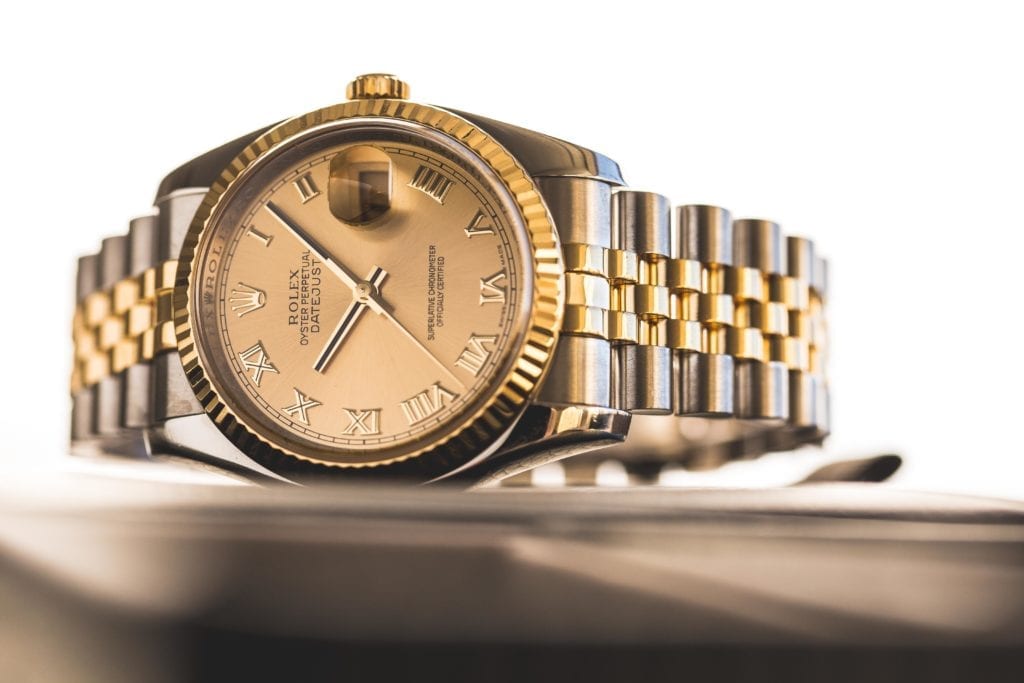

The bracelet is quite possibly one of the most overlooked aspects of a timepiece. Sure, the case, dial, and bezel are the star of the show because they display the primary function and style of the watch. Still, the bracelet is an incredibly important aspect. It plays a big role in the comfort and placement of your watch on your wrist. In addition, the simple changing of a bracelet can have a major impact on the style of a watch.
When we think of the most interesting bracelets, Rolex immediately comes to mind. No brand has bracelets quite as iconic as Rolex. Their bracelets are not merely an accessory to the watch itself. They’re an extension of the watch’s design. Here, we’ll look at six of the brand’s quintessential bracelet styles.


Rolex’s creation of the Jubilee bracelet is an important piece of the brand’s history. In 1945, the manufacturer celebrated their 40th anniversary. To commemorate the occasion, they debuted a brand new model: the Datejust. With the introduction of their latest model came the introduction of an all-new bracelet, and thus the Jubilee was born. The Jubilee features an incredibly unique design with five parts to each link. It boasts three small center links flanked by two large outer links on either side of the bracelet. Rolex originally offered the Jubilee exclusively in gold. However, it’s since become available in a two-tone variation and stainless steel; both perfectly show off the striking contrast within the unique design.
The Oyster Bracelet is arguably the most iconic and instantly recognizable of the Rolex bracelets. The brand patented the design over 70 years ago, just a couple years after the Jubilee in 1947. It showcases a flat, three-piece link configuration. Though the Oyster bracelet has always maintained its original charm, Rolex has made subtle improvements in its construction over time. The initial design featured straight ends, like tubes for the spring bar. Later, Rolex filed another patent for the curved ends links that have since become a trademark of the Oyster bracelet. Then, in the mid-2000’s, Rolex introduced sold end links and sold center links. You can find the Oyster bracelet on a wide array of models. For example, it’s included on the Submariner, Daytona, and, of course, the Oyster Perpetual.
Rolex released the first President bracelet on the very first Day-Date about a decade after the Oyster in 1956. Since its inception, the brand has only featured the President bracelet on a Day-Date, also affectionately known as the President. The design of the President bracelet somewhat combines the characteristics of the Jubilee and Oyster. Like the Oyster, it features a three-link configuration. Additionally, like the Jubilee, it showcases a combination of larger and smaller sized links. Despite the similarities, one characteristic makes the President bracelet unique. Its links are semi-circular and curved in such a way that creates a rounded, beaded look.
As an addition to some President bracelet is a beautiful textured element known as bark. Bark is deemed this way because of its similarity in look to tree bark. These elements are most often found on the President, but do appear on some Datejusts as well. Though they can be on the bezel, on the bracelet they are the center link. Made from the early 70’s until the late 80’s these bracelets give an added touch to an already iconic bracelet.
In 1977, Rolex introduced another range of integrated bracelets. For some historical context, the late 1970’s marked the dawn of the Quartz Crisis. In sticking with the trend, Rolex launched a new set of quartz models, the Oysterquartz. They each came equipped with a new integrated bracelet. Like the watches themselves, these bracelets followed the fashions of the era with a design that tapered toward the clasp. Additionally, to create the variations of the integrated bracelets, Rolex simply modified the existing designs for the Jubilee, Oyster, and President.
In the new millennium, Rolex has added a modern rubber bracelet to their catalog. The brand released the Oysterflex bracelet just a few years ago in 2015. The style first debuted on the Rolex Everose Yacht-Master. You might typically think of a watchband made of rubber as a strap. However, Rolex’s naming as a bracelet is no mistake. Their proprietary Oysterflex material is made of a titanium and nickel alloy coated in elastomer. This innovative, one-of-a-kind construction results in a bracelet that’s robust like metal yet flexible like rubber. Since its initial debut, the Oysterflex bracelet is now available on other models, like the Everose Daytona.
Protect What You Love With Hodinkee Insurance We're here to help avoid a potential heartache.…
Watching Movies: Adam Driver Takes Over The Gucci Family Empire Wearing A JLC Reverso in…
Second Opinions: The Tudor Black Bay Fifty-Eight Is Not A Submariner Alternative It's its own…
Your Watch Just Tripled In Value – Now What? Auction season is around the corner.…
A Week On The Wrist: The 40mm TAG Heuer Aquaracer Could Be Your Only Watch…
Five Critical Things To Do Before Buying A Watch Online Originally published by Hodinkee, March…
View Comments
Great article. But what about the Clasp. They are pretty unique too!